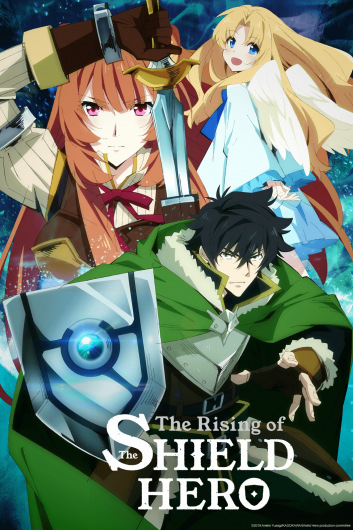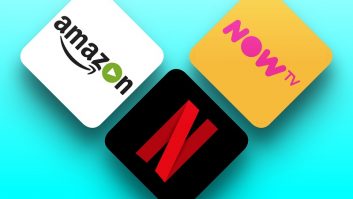While the SVoD story tends to be dominated by streaming giants Netflix and Amazon (which between them are expected to account for a third of subscriptions by 2024), a smaller group of specialist services are poised to disrupt the industry, with the world’s most popular anime brand Crunchyroll reporting a user base of 50 million people globally. TVBEurope asks the company’s head of global operations and international, Brady McCollum, how the brand got here and where it’s headed.
Is anime on the rise in the UK and Europe?
Absolutely. Over the last few years, we’ve tracked the rise of anime around the world. We’ve also seen our community of subscribers grow internationally – we celebrated crossing our 2 million subscriber mark late last year, and we know this year will be another big one for us.
To give you an example of some of the international growth we’ve seen, we actually received the second most votes from the UK during the Anime Awards this year. The Anime Awards are Crunchyroll’s yearly awards show honouring the best and brightest in Japanese animation, and this year we received over 5 million votes in total, up 143 per cent year over year. This is just one of the many experiences we offer to fans around the world, and we so appreciate the passion and support of our international community.
What do you think the reason is for Crunchyroll’s rapid expansion?
We’ve seen the anime industry grow tremendously since Crunchyroll’s launch in 2006. We entered the scene as a community and video sharing site to enable fans to share content that was difficult to access here in the US. Anime was consistently our top genre, and we worked to directly license this content from Japan. In 2009, Crunchyroll transitioned to a fully licensed offering with multiple anime simulcasts, including Naruto Shippuden.
We’re very excited by anime’s prominence in mainstream pop culture, and proud that Crunchyroll has been a part of that growth since launch. Anime conventions continue to grow in attendance, we’re noticing more anime being produced and created across the board, and more streaming services are distributing anime on their platforms.
Through all of the growth for both the industry at large and for our platform, our focus has remained the same: to connect our community to the world’s largest collection of anime and to each other through social media, through events like Crunchyroll Expo, through Crunchyroll News, our Crunchyroll store, games, and more. We are committed to making sure Crunchyroll is the best home for anime. We’re excited by the growth of the industry, and we look forward to super serving our global community in the years to come.

Do Netflix and Amazon pose a threat to your model (or the other way round)?
We see competition as a good thing – it requires everyone to work that much harder to better serve fans. At Crunchyroll, we are focused on being everything to someone, not something for everyone. This vision enables us to bring the best titles to our platform, and create a plethora of experiences for our fans to connect through the content they love. There may be other players starting to explore the space, but we will always work that much harder to better serve the global anime community.
What social elements are tied in to the platform?
On platform, we offer a variety of social experiences including personal profiles, forums for community discussion, and commenting across videos and Crunchyroll News posts.
Off platform, we have a robust social community and a team committed to engaging with our fans around the world. Currently, our team operates multiple social pages, with 30 million collective social followers across eight languages. We are committed to making sure every anime fan feels welcome here at Crunchyroll.
Who are Crunchyroll’s primary distribution partners?
We have a variety of international linear distribution partners including Rede TV in Brazil, 2×2 in Russia, Arcade Media in Latin America, Viacom in France, and ETC in Chile.
For home video, we’ve licensed content directly or indirectly to All the Anime, MangaUK in the UK; All the Anime in France; Kaze, KSM, and Peppermint in Germany to name a few examples.
As it pertains to streaming, we primarily distribute through our owned and operated platform.

Is subtitling of the content handled by the production companies?
For our simulcast series, we typically handle the subtitling in house to make sure our community can watch the latest episode day in date with the Japanese premiere across the multiple languages we support.
What are Crunchyroll’s plans for expansion?
Over the next year, you can expect Crunchyroll to focus on growing our international reach by investigating new content distribution deals, seeking out new ways to connect international fans through events, and exploring growth opportunities for Crunchyroll in developing markets. We’re always searching for ways to bring that 360-experience to fans everywhere, including new merchandise, more events, and more Crunchyroll Games, which you can expect very soon.
Would you move away from anime into other content?
Anime will always be at the core of our business, so you shouldn’t expect that to change. That said, we recently opened Crunchyroll Studios, focused on the creation of original, anime-inspired content. The move into originals was a natural evolution of our business. We recognise that anime is a global phenomenon, and we’ve seen that there are a number of creators looking to share their stories using anime as a medium. We currently have production shops open in Burbank, CA, and Tokyo, Japan, and we’ll have a full slate to announce early next year. We’re looking forward to being able to share more about the exciting projects we have underway.






